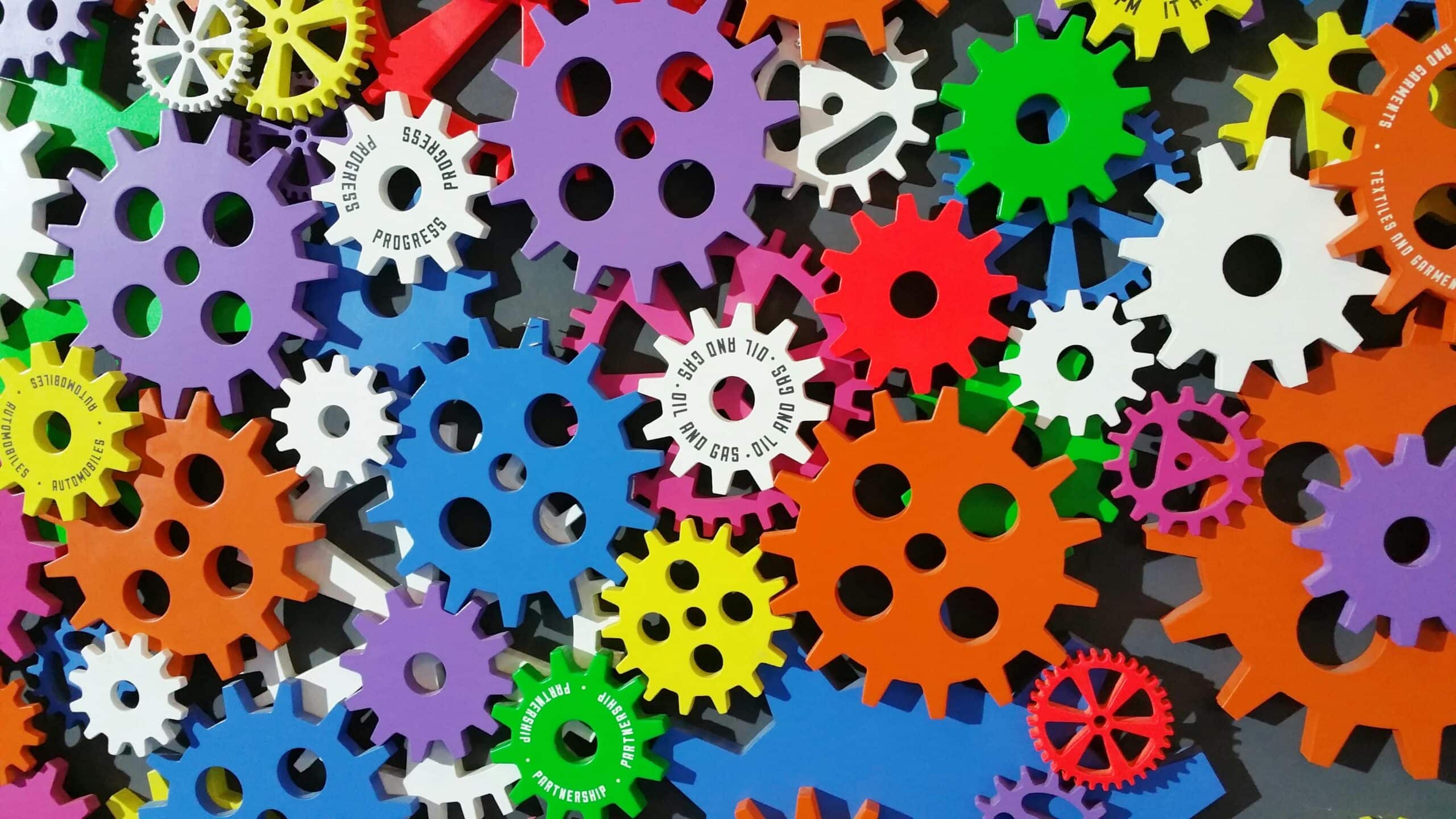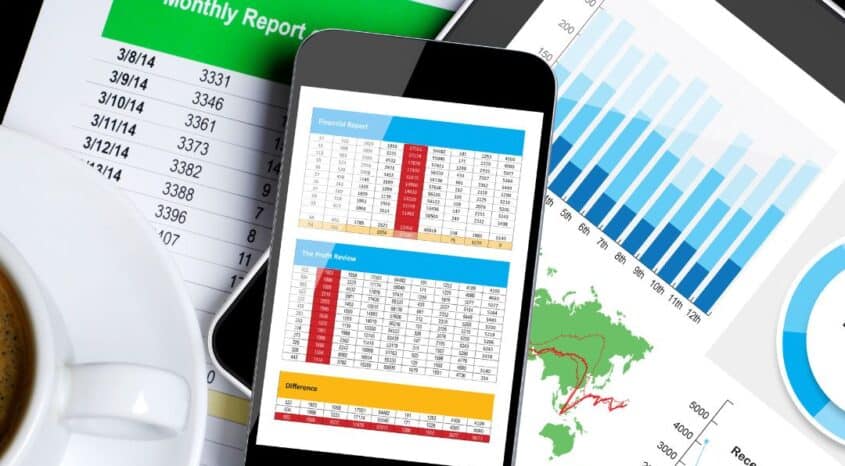Retail automation is a game-changer for businesses looking to streamline operations, enhance customer experiences, and boost profitability. As retail, e-commerce, and wholesale markets grow and evolve, companies increasingly turn to retail automation technologies to stay competitive and meet consumers’ ever-changing demands.
Retail automation can involve a variety of technologies and processes designed to minimize human intervention in day-to-day retail operations. From inventory management and customer support to personalized marketing and seamless checkout experiences, e-commerce businesses are leveraging automation to optimize every aspect of their operations, resulting in improved efficiency, reduced costs, and a more satisfying shopping experience for customers.
To better understand how automation can benefit your retail business, you’ll want to learn about what it is and what it looks like in the real world. Consider this your comprehensive guide to automation in retail.
What Is Retail Automation?
Retail automation refers to using technology and software to automate various processes and tasks within the retail industry. It involves implementing systems and tools to perform repetitive, time-consuming, and complex tasks without human intervention. This automation can cover a wide range of retail operations, including inventory management, order processing, customer service, marketing, sales analytics, and more.
Retail automation aims to streamline workflows, reduce errors, and improve overall efficiency in retail businesses. By leveraging technologies such as artificial intelligence (AI), machine learning, Internet of Things (IoT) devices, and advanced data analytics, retailers can create more responsive, agile, and customer-centric operations that drive growth and success.
The Benefits of Retail Automation Solutions
Implementing automation in your operations can be a game-changer for your retail business. Let’s take a look at some of the benefits that can come from implementing automation software.
A streamlined workforce
By automating routine tasks, you’ll free up your team to focus on what really matters—building customer relationships and driving innovation. In addition to empowering your teams to make a bigger impact, it allows you to reduce labor costs without eliminating jobs.
Turbocharged operational efficiency
Imagine processing orders, updating in-store and online inventory, and managing customer data through all sales channels at lightning speed. That’s the power of automation. You’ll handle more business with less stress and set the stage for scalable growth, as the increased efficiency will allow you to handle a higher volume of transactions and customer interactions.
Less human error
People make mistakes, and those mistakes cost your business money. Implementing retail automation minimizes human error, such as inventory discrepancies and shipping mix-ups, as automation doesn’t grow tired or get distracted like humans do when it comes to repetitive tasks. Fewer mistakes, thanks to automation, will add to significant cost savings—without eliminating jobs.
A bigger bottom line
The combination of reduced costs, enhanced efficiency, and improved customer experience always results in increased profitability. Automation allows you to operate with lower overheads, make better use of your resources, and capitalize on sales opportunities at every corner. This can lead to higher conversion rates, increased customer lifetime value, and overall business growth.
Better supply chain management
Automation significantly enhances supply chain management by providing real-time visibility and control over the entire process. It enables you to track inventory levels, monitor shipments, and predict demand with greater accuracy, leading to optimized stock levels and reduced carrying costs. Automated systems can also facilitate better communication and coordination with suppliers, streamlining the procurement process and ensuring timely deliveries.
With BrightPearl’s automated inventory management, you can track inventory, monitor shipments, and forecast demand with optimal precision. Say goodbye to stockouts and overstocking and hello to optimized inventory levels and smoother supplier relationships.
Easier scalability
Retail automation makes it significantly easier to scale your operations without a proportional resource increase. Automated systems can handle increased transaction volumes, inventory management, and customer interactions with minimal additional investment. This scalability will enable you to expand your product lines, enter new markets, or handle seasonal peaks in demand more efficiently, supporting business growth without compromising operational efficiency or customer service quality.
Enhanced customer experience
The customer experience is everything in today’s retail environment. When you have the right automation tools to extract and analyze customer data quickly, you can offer more personalized recommendations, streamline the checkout process, and respond swiftly to inquiries. The result? Happier repeat customers.
How You Can Automate Your Retail Business
Automated retail technologies can be applied to many different aspects of the retail industry. Here are some common examples of retail automation solutions you can start implementing to improve your retail workflow and overall business operations:
- Inventory management: Automated systems use real-time data and predictive analytics to optimize stock levels, prevent stockouts, and reduce overstocking. These systems can automatically reorder products when inventory reaches a certain threshold and forecast demand based on historical data and trends. BrightPearl’s inventory management system leverages real-time data and advanced analytics to optimize your inventory management. The system can automatically reorder products when inventory reaches a predetermined threshold and forecast demand based on historical sales data and market trends.
- Customer support: Chatbots and AI-powered virtual assistants handle a wide range of customer inquiries, from product information to order tracking, 24/7. They can escalate complex issues to human agents, ensuring efficient and timely customer support to strengthen your overall customer relationship management strategy. While BrightPearl may not offer built-in chatbot or AI capabilities, it can integrate with third-party platforms to provide automated customer support. This allows businesses to handle common inquiries 24/7, reducing response times and improving customer satisfaction.
- Return process: Automation technology for return systems streamlines the often cumbersome process of product returns. These systems can generate return labels, process refunds automatically, and update inventory levels in real-time. BrightPearl’s return management system streamlines retail business processes like returns by automating your entire return process and updating inventory levels in real-time. This reduces manual effort, improves efficiency, and minimizes errors.
- Retail workflows: Automation in retail workflows covers processes from order processing to employee scheduling. For example, automated order fulfillment systems can pick, pack, and ship orders with minimal human intervention, while AI-powered scheduling tools optimize staff allocation based on predicted store traffic. BrightPearl’s automation engine can significantly streamline order fulfillment processes by automating picking, packing, and shipping tasks. This reduces manual labor, improves accuracy, and speeds up order delivery.
Challenges and Considerations of Automation in Retail
While retail automation offers numerous benefits, it also comes with its own set of challenges. Here is what you would need to consider when choosing and implementing retail automation software:
- Evolving customer preferences: Customer expectations are constantly changing, and retailers must ensure their automated systems can adapt. Striking a balance between automation and personalized service is crucial to cater to diverse customer preferences.
- Synchronization of multiple integrations: Implementing automation often involves integrating various systems and technologies. Ensuring seamless communication and data flow between these different components can be challenging and requires careful planning.
- Ever-changing product data: Product information is constantly evolving in retail. Automated systems must be flexible enough to handle frequent changes in product data without causing disruptions or errors in connected systems.
- Data reliance: Automated systems heavily rely on data to function effectively. To maximize the benefits of automation, retailers must invest in robust data management practices to ensure the accuracy, completeness, and security of their data.
- Finding the right tool: Selecting the appropriate automation tools and software can be overwhelming due to the many available options. Retailers must carefully evaluate their specific needs, budget constraints, and existing systems to choose solutions that integrate seamlessly with their operations. When making this decision, it’s crucial to consider factors such as scalability, customization options, and vendor support.
- Unreasonable expectations of automation: There’s often a misconception that automation can solve all problems without human involvement. Retailers must set realistic expectations and understand that human oversight and intervention will still be necessary, especially for complex decision-making, to ensure their retail automation implementation is successful.
Future Trends for Automation in the Retail Industry
The retail automation landscape is continuously evolving, with new technologies and approaches emerging. Here are some of the top trends shaping the future:
AI machine learning and gen AI
AI and Machine Learning will enable more sophisticated demand forecasting, personalized customer experiences, and predictive maintenance of retail equipment. Generative AI is opening up new possibilities in areas like product design, content creation for marketing, and virtual shopping assistants that can engage in natural language conversations with customers.
Augmented reality (AR)
AR technology is set to transform the shopping experience, both online and in physical retail stores. In e-commerce, AR can allow customers to virtually try on clothes or visualize furniture in their homes before purchasing. This technology can automate and enhance the product discovery and decision-making process for customers.
RFID, QR codes, and other smart technologies
RFID tags and QR codes are becoming increasingly important in retail automation. They enable automated inventory tracking, reduce shrinkage, and provide customers with instant access to product information. As these technologies evolve, they will enable new levels of automation in inventory management, checkout processes, and customer engagement.
Mobile technology
Mobile apps are becoming central to the shopping experience, automating everything from product discovery to payments and loyalty programs. Future trends may include more sophisticated in-store navigation, automated mobile checkout systems, and personalized, location-based promotions delivered directly to customers’ devices.
Datafication
The increasing ability to collect, process, and analyze vast amounts of data is fueling advancements in retail automation. This “datafication” of retail enables more precise demand forecasting, personalized marketing, and optimization of pricing and inventory levels. We can expect to see even more sophisticated use of real-time analytics that allow for instant adjustments to retail strategies and operations.
Is Your Retail Business Ready for Automation Technologies?
Retail automation is not just a trend but a fundamental shift in how retail businesses operate. As technology continues to advance, we can expect to see even more innovative applications of automation in the retail sector. However, the key to success lies in balancing automation with the human touch, ensuring that technology enhances rather than replaces the personal connections that are at the heart of retail experiences.
For e-commerce businesses looking to stay competitive and grow in this rapidly evolving landscape, embracing retail automation is no longer optional—it’s essential. By leveraging the right automation tools and strategies, you can streamline your operations, reduce costs, and provide the seamless, personalized experiences that today’s consumers demand.
Ready to take your e-commerce business to the next level with retail automation? Discover how BrightPearl’s comprehensive retail operating system can help you automate and optimize your e-commerce and retail operations. Try a demo today and see firsthand how our powerful automation software and services can transform your business.






